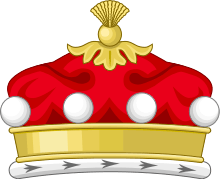Baron FitzWalter
Baron FitzWalter is an ancient title in the Peerage of England. It was created on 24 June 1295 for Robert FitzWalter. The title was created by writ, which means that it can descend through both male and female lines. His great-grandson, the fourth baron, was an Admiral of the Fleet. The fourth baron's grandson, the seventh baron, was succeeded by his daughter and only child, Elizabeth. She was the wife of John Radcliffe. Their son, the ninth baron, was attainted for treason in 1495 with his title forfeited. However, his son Robert Radcliffe obtained a reversal of the attainder by Act of Parliament in 1509 and later served as Lord Lieutenant of Lancashire. He was created Viscount FitzWalter in 1525 and Earl of Sussex in 1529. His grandson, the third earl, was summoned to the House of Lords through a writ of acceleration in 1553 in his father's junior title of Baron FitzWalter. Lord Sussex later served as Lord Deputy of Ireland. He was succeeded by his younger brother, the fourth earl. He had earlier represented Maldon, Hampshire and Portsmouth in the House of Commons and also served as Lord Lieutenant of Hampshire. When he died the titles passed to his only child, the fifth earl. He was Lord Lieutenant of Essex.
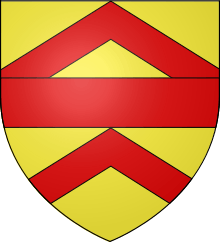
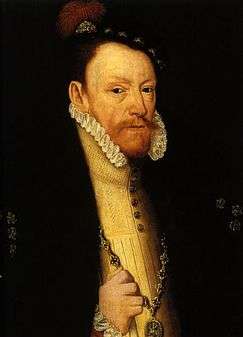
and 12th Baron FitzWalter
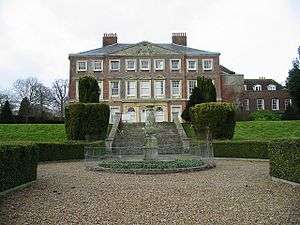
On his death in 1629 the barony of FitzWalter separated from the viscountcy and earldom. The latter titles were inherited by the late earl's cousin and heir male, the sixth earl, who notably sat as a Member of Parliament for Petersfield, Bedford and Portsmouth. When he died in 1643 the viscountcy and earldom became extinct. The claim to the barony of FitzWalter was passed on to the fifth earl's heir-general Henry Mildmay, de jure fifteenth baron. He was the descendant of Lady Frances Mildmay, only daughter of the second earl of Sussex by his second wife, Anne Calthorpe. He claimed the barony in 1641 and 1645 but was unsuccessful both times and was never summoned to the House of Lords. His grandson Henry Mildmay, de jure sixteenth baron, successfully claimed the title in 1660. However, his younger brother Benjamin Mildmay successfully petitioned for the peerage in 1667 and was summoned to the House of Lords as the seventeenth baron. In 1730 his younger son, the nineteenth baron, was created Viscount Harwich, in the County of Essex, and Earl FitzWalter, in the Peerage of Great Britain. Lord FitzWalter later served as President of the Board of Trade and was also Lord Lieutenant of Essex.
However, on his death in 1756 the viscountcy and earldom became extinct while the barony of FitzWalter fell into abeyance between the daughters of Mary, only sister of the sixteenth and seventeenth barons. The peerage remained in abeyance for 168 years, until it was called out of abeyance in 1924 (after a petition to the House of Lords) in favour of Henry Fitzwalter Plumptre, who became the twentieth baron.[1] He was the son of John Bridges Plumptre and grandson of Eleanor, wife of Reverend Henry Western Plumptre and daughter of Sir Brook William Bridges, 4th Baronet, of Goodneston, a descendant of the aforementioned Mary, sister of the sixteenth and seventeenth barons. Sir Brook William Bridge's eldest son Sir Brook William Bridges, 5th Baronet, of Goodneston, had unsuccessfully claimed the barony in 1842, but was instead created Baron FitzWalter, of Woodham Walter in the County of Essex, in 1868 (for more information on this creation, which became extinct in 1875, see Bridges baronets of Goodneston).
The twentieth baron died childless in 1932 when the peerage once again fell into abeyance. The abeyance was terminated in 1953 in favour of Fitzwalter Brook Plumptre, the twenty-first Baron. He was the son of George Beresford Plumptre, younger brother of the twentieth baron. As of 2017 the title is held by his son, the twenty-second baron, who succeeded in 2004.
The family seat is Goodnestone Park. The house was built in 1704 by Sir Brook Bridges, 1st Baronet, of Goodneston. The house came into the Plumptre family through the marriage of the aforesaid Eleanor Bridges, daughter of Sir Brook William Bridges, 4th Baronet, of Goodneston, to Reverend Henry Western Plumptre, whose son John Bridges Plumptre inherited it upon the death of the last Bridges baronet of Goodneston in 1899.
The FitzWalters were of same line as the de Clare. Presuming they were from an unbroken male line, the seventh baron was the last agnate of the House of Normandy. Through de Balliol they also have a connection to the old Saxon line in England.
Barons FitzWalter (1295)
- Robert FitzWalter, 1st Baron FitzWalter (1247–1325)[2]
- Robert FitzWalter (c. 1297–1328), 2nd Baron FitzWalter by modern usage[2]
- John FitzWalter, 2nd (or 3rd) Baron FitzWalter, son of previous (c. 1315–1361)[2]
- Walter FitzWalter, 3rd (or 4th) Baron FitzWalter (1345–1386), son of previous[2]
- Walter FitzWalter, 4th (or 5th) Baron FitzWalter (1368–1406), son of previous[2]
- Humphrey Fitzwalter (1398–1415), (de jure) 6th Baron FitzWalter by modern usage (never summoned to parl.), son of previous[2]
- Walter FitzWalter, 5th (or 7th) Baron FitzWalter (1400–1431), brother of previous[2]
- Elizabeth FitzWalter (1430–1485), de jure 8th Baroness FitzWalter, daughter of previous, wife of Sir John Radcliffe of Attleborough[3]
- John Radcliffe, 6th (or 9th) Baron FitzWalter (1452?–1496), son of previous[3]
- Robert Radcliffe, 7th or 10th Baron FitzWalter (d. 1542), son of the 6th/9th baron, restored 1506; created Viscount FitzWalter 1525, created Earl of Sussex in 1529
Earls of Sussex (1529)
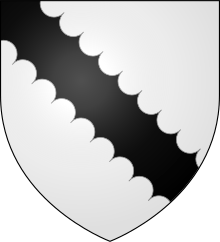
- Robert Radcliffe, 1st Earl of Sussex, 1st Viscount FitzWalter, 10th Baron FitzWalter (d. 1542)
- Henry Radclyffe, 2nd Earl of Sussex, 2nd Viscount FitzWalter, 11th Baron FitzWalter (c. 1506–1557)
- Thomas Radclyffe, 3rd Earl of Sussex, 3rd Viscount FitzWalter, 12th Baron FitzWalter (c. 1525–1583)
- Henry Radclyffe, 4th Earl of Sussex, 4th Viscount FitzWalter, 13th Baron FitzWalter (c. 1530–1593)
- Robert Radclyffe, 5th Earl of Sussex, 5th Viscount FitzWalter, 14th Baron FitzWalter (d. 1629) (barony dormant)
- Edward Radclyffe, 6th Earl of Sussex, 6th Viscount FitzWalter (1559–1643) (never Baron FitzWalter)
Barons FitzWalter (1295; Reverted)
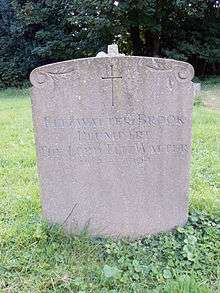
- Henry Mildmay, de jure 15th Baron FitzWalter (c. 1585–1654)
- Henry Mildmay, de jure 16th Baron FitzWalter (d. 1662)
- Benjamin Mildmay, 17th Baron FitzWalter (c. 1646–1679) (confirmed 1667)
- Charles Mildmay, 18th Baron FitzWalter (1670–1728)
- Benjamin Mildmay, 19th Baron FitzWalter (1672–1756) (created Earl FitzWalter in 1730)
Earls FitzWalter (1730)
- Benjamin Mildmay, 1st Earl FitzWalter, 19th Baron FitzWalter (1672–1756) (barony abeyant 1756)
Barons FitzWalter (1295; Reverted)
- Henry Fitzwalter Plumptre, 20th Baron FitzWalter (1860–1932) (abeyance terminated 1924; abeyant 1932)
- Fitzwalter Brook Plumptre, 21st Baron FitzWalter (1914–2004) (abeyance terminated 1953)
- Julian Brook Plumptre, 22nd Baron FitzWalter (b. 1952)
The heir apparent is the present holder's son Hon. Edward Brook Plumptre (b. 1989).
Barons FitzWalter (1868)
Notes
- "No. 32980". The London Gazette. 7 October 1924. p. 7251.
- Christopher Starr, ‘Fitzwalter family (per. c.1200–c.1500)’, Oxford Dictionary of National Biography, Oxford University Press, 2004 accessed 20 Aug 2017
- https://en.wikisource.org/wiki/Radcliffe,_John_(1452%3F-1496)_(DNB00)
References
- Kidd, Charles; Williamson, David, eds. (1990). Debrett's Peerage and Baronetage. New York: St Martin's Press.
- Baron Fitzwalter
- Leigh Rayment's Historical List of MPs
